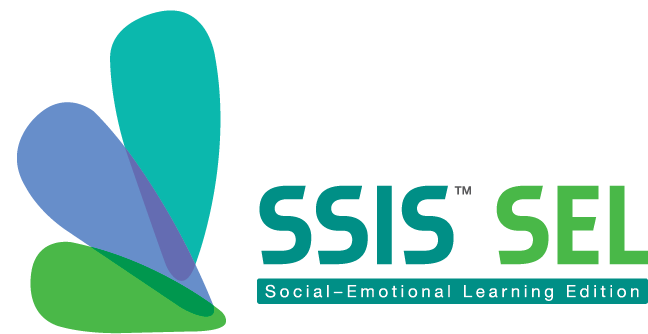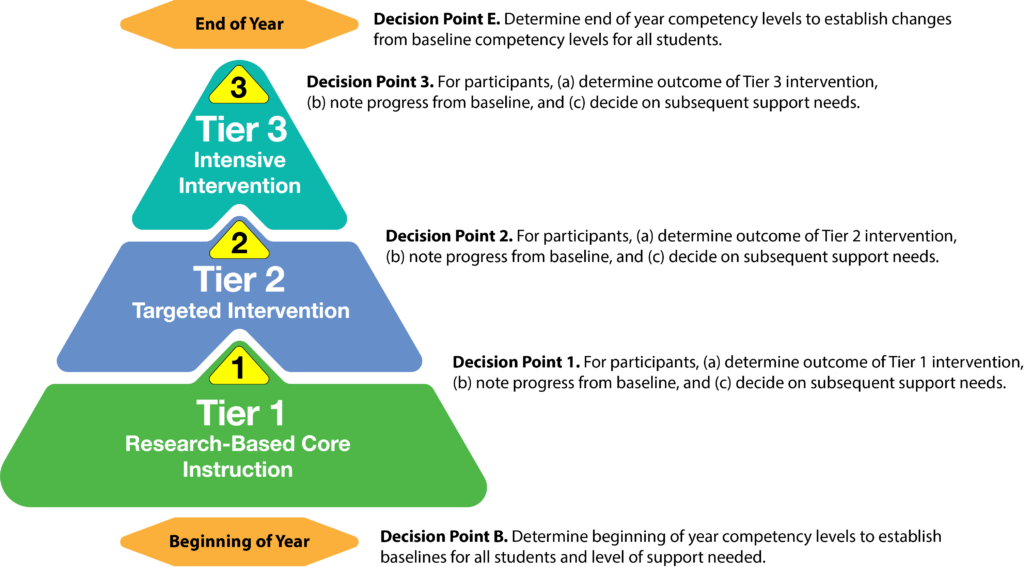Brief #1 – Assessment Driven MTSS
Assessment Simplified
Assessment Driven MTSS
Brief Assessments & Models for Making Support Decisions
Stephen N. Elliott, PhD

Prevention, positive behavior support, and response-to-intervention initiatives are in many schools today as central parts of a multi-tiered system of supports (MTSS) designed to improve the social and academic lives of all students and help create positive school culture. A widely accepted framework for conceptualizing MTSS involves three levels (or tiers) of support services. Tier 1 support represents research-based core instruction for all students. Tier 2 support represents intervention targeted to approximately 15% of students who need extra support (e.g., more time, practice, and feedback) to improve, and Tier 3 support represents a more intensive intervention (e.g., more individualized, longer duration) for an estimated 5% to 10% of students. Effective MTSS management is predicated on (a) systematically identifying students’ needs, (b) using assessment data to guide decisions about the selection of effective strategies to improve student behavior and/or achievement, (c) implementing effective interventions, and (d) evaluating student progress and intervention outcomes (Glover, 2018). A number of challenges exist to implementing effective multi-tiered services focusing on improving students’ SEL skills. These include the existence of few reliable screening assessments aligned to interventions, a limited number of proven effective universal interventions, and few formal assessments for monitoring progress.
Brief Assessments for Making Evidence-Based Decisions
The need for psychometrically sound assessments for making decisions within multi-tiered student support (MTSS) spurred the development of the SSIS SEL Brief Scales. These rating forms measure a representative sample of social–emotional competencies related to self-awareness, self-management, social awareness, relationship skills, and responsible decision making. They can be completed in 5 minutes by a teacher or students (Grades 3-12) to screen an entire class, grade level, or school on 20 key SEL skills (Elliott, DiPerna, Anthony, Lei, & Gresham, 2020). These assessments are functionally short-form versions of the comprehensive SSIS SEL Edition Intervention Simplified Brief #11 / SSIS CoLab © 2020 2 Rating Forms-Teacher or Student (Gresham & Elliott, 2017). The accompanying Figure illustrates key assessment decision points where these Brief Scales can be used within a 3-level MTSS system across a school year.

SEL Assessment Decisions
Educators involved in SEL programs differ with regard to how they use assessments to make the best decisions for their students and schools. The SSIS SEL Brief Scales-Teacher and Student versions help users make a number of decisions about individual and groups of students. Specifically, these decisions are about:
- Students’ overall SEL competency status or proficiency level,
- Students’ specific SEL skill strengths and areas in need of improvement,
- Changes in students’ SEL competency level and skills over time, and
- Performance benchmarks for SEL competencies across grades/developmental levels.
When the skills assessed are well aligned with skills taught in a program based on the CASEL competency framework, the SSIS SEL Brief Scales also can be used to make decisions about:
- SEL skill units to be taught and
- Effects of intervention programs on students’ SEL skills improvement.
As highlighted in the K-12 MTSS model figure, there are five basic assessment decision points across the three levels of support. Specifically, in coordination with the implementation and completion of each specific level of support are summative assessment decision points or gates. In addition to the intervention level assessment decision points, the comprehensive framework encourages beginning of year and end of year assessments. We consider this 5-decision point assessment approach to implementing an SEL focused MTSS model as a Basic Intervention Assessment (BIA) model. This BIA model can be implemented effectively using SSIS assessments with both student and teacher informants. For the majority of students, three assessments over the course of a school year are likely: Baseline, Point 1, and End. For students receiving more support than Tier 1, four or five assessments may be needed: Baseline, Point 1, Point 2 and/or Point 3, and End. Clearly, with any of these assessment plans, it is important that the assessments be time-efficient, well aligned with the skills being provided in the supportive intervention, and yield reliable and valid scores for making moderate stakes decisions.
Alternative models that build upon or significantly modify the BIA model are possible. An assessment model that features more frequent progress monitoring within tiers of support could supplement or supplant Decision Points 1, 2, or 3. Progress monitoring (PM) could be completed via direct observations by a program leader during intervention sessions, selfmonitoring charts, or other assessment tools like the SSIS SEL Screening/Progress Monitoring Scales (Elliott & Gresham, 2017), Thus, this approach could be called BIA+PM model when progress monitoring assessments occur prior to Decision Points 1, 2, or 3.
Another model could be conceptualized within a typical fall-winter-spring Benchmarking approach prevalent with many academic assessment programs. The Benchmark Points would be calendar based with the fall and spring assessment points replacing the Baseline and Exit points in the BIA, and the winter assessment replacing the Decision Points 1, 2, and 3. A Benchmarking Model (BM) for SEL that is coordinated with academic benchmark assessments may be attractive to many educators and likely provides opportunities for integrating students’ social and academic data.
Conclusion
The SSIS SEL Brief Scales are flexible, efficient, and validated measures for making fundamental decisions about students and programs to improve students’ SEL skills. An MTSS services framework provides an effective structure for prioritizing and integrating SEL assessment and intervention actions for individual students and groups of students. In general, however, the SSIS SEL Brief Scales can be a primary assessment for use in a variety of MTSS models because they are time-efficient, cost effective, and aligned to the CASEL competency model and most states’ SEL standards.
References
Elliott, S.N., DiPerna, J.C., Anthony, C.J., Lei, P., & Gresham, F.M. (2020). SSIS SEL Brief Scales. Scottsdale, AZ: SAIL CoLab.
Elliott, S. N., & Gresham, F. M. (2017b). SSIS SEL Edition Screening/Progress Monitoring Scales [Measurement instrument]. Bloomington, MN: NCS Pearson.
Glover, T. A. (2018). Response-to-intervention models and access to services for all students. In S. N. Elliott, R. J. Kettler, P. A. Beddow, & A. Kurz (Eds.), Handbook of Accessible Instruction and Testing Practices: Issues, Innovations, and Applications (2nd ed., pp. 157–166). New York, NY: Springer.
Stephen N. Elliott, PhD, is the Mickelson Foundation Professor at Arizona State University and the co-author of the SSIS SEL Edition Assessments and Classwide Intervention Program.
